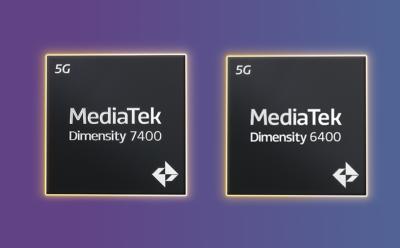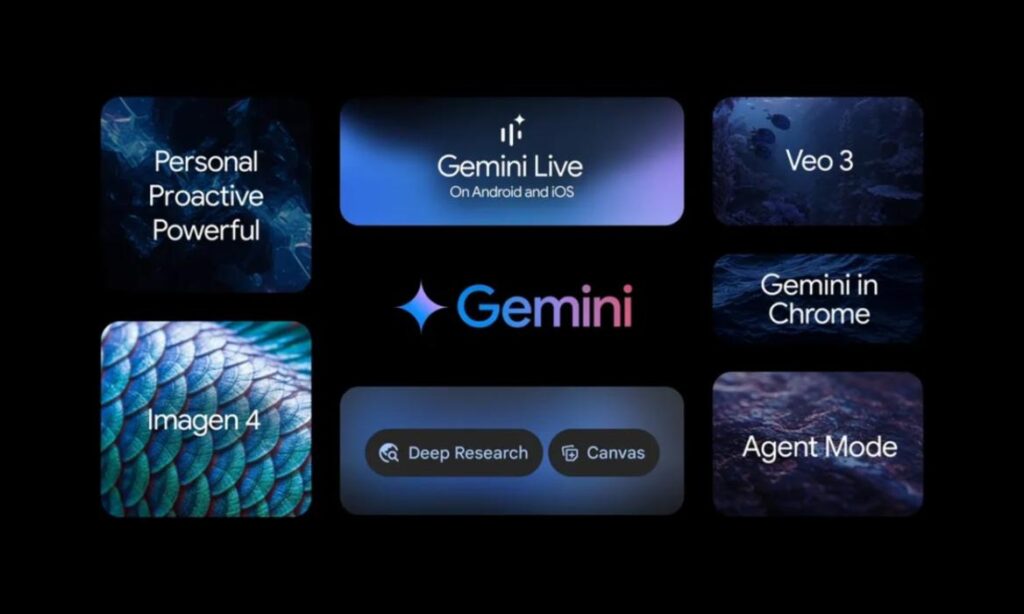MediaTek has unveiled a trio of mid-range chipsets — the Dimensity 7400, Dimensity 7400X, and Dimensity 6400 — aimed at powering a new wave of balanced smartphones and foldables. The two upper-tier chips share a nearly identical core design, marching in with an octa-core CPU setup, advanced graphics, AI boosts, and a suite of imaging and connectivity features. The budget Dimensity 6400 rounds out the lineup with a different balance of cores, a more modest GPU, and a 6nm fabrication process, while still delivering high-end imaging and gaming-oriented capabilities for its class. This expanded family signals MediaTek’s push to address diverse segments with a clear focus on efficiency, camera prowess, and 5G performance.
Processor architecture and core configuration
The Dimensity 7400 and 7400X sit on a shared architectural foundation designed to strike a balance between performance and power efficiency for mid-range devices. Both chips employ an octa-core CPU arrangement, comprising four high-performance Cortex-A78 cores clocked up to 2.6GHz, paired with four efficiency-focused Cortex-A55 cores running up to 2.0GHz. This big-little configuration is a familiar approach for delivering robust everyday performance while preserving battery life during lighter tasks or background operations.
Both 7400 and 7400X are built on TSMC’s 4-nanometer process node, a fabrication choice that helps optimize power efficiency and thermal behavior relative to older nodes. The move to 4nm underpins better energy efficiency for a given workload, enabling longer smooth performance in apps, gaming, and camera-intensive tasks.
For graphics rendering, MediaTek equips these chipsets with the Arm Mali-G615 MC2 GPU. This GPU is positioned to handle contemporary mobile games with a focus on efficiency and respectable frame rates in mid-range devices. MediaTek also highlights an AI-assisted optimization layer designed to reduce input lag in gaming sessions, aiming to deliver quicker response times and a more reactive gaming experience. The company describes this improvement as part of its ongoing efforts to harmonize CPU, GPU, and AI processes to minimize latency from input to on-screen action.
In the realm of artificial intelligence, the Dimensity 7400 and 7400X integrate NPU 6.0, MediaTek’s neural processing unit. MediaTek claims the NPU 6.0 is about 15% faster than the NPU featured in the Dimensity 7300, signaling a meaningful uplift in AI workloads such as scene recognition, on-device image processing, and real-time enhancements. This boost is designed to support more sophisticated AI features within applications, improve camera-based AI operations, and generally accelerate tasks that rely on on-device intelligence.
Both devices share the same imaging pipeline in this tier, namely the Imagiq 950 ISP, which brings Google Ultra HDR support and AI-powered camera features. The inclusion of Imagiq 950 helps deliver high-quality processing for HDR capture, improved dynamic range, and better overall imaging performance in a variety of lighting scenarios. The combination of a capable ISP with AI-driven enhancements is aimed at delivering sharper photos and more natural-looking videos without a heavy reliance on cloud processing.
Subsection: 5G and local connectivity
On the connectivity front, the Dimensity 7400 family includes a 5G modem designed around Release 16 specifications. The modem supports 3CC carrier aggregation (CCA), a feature that helps improve bandwidth efficiency and can contribute to lower power consumption during data transfers. MediaTek notes that this design reduces power consumption by about 20%, a meaningful benefit for battery life during sustained downloads or streaming in 5G networks.
For local wireless connectivity, both the 7400 and 7400X come with Tri-band Wi-Fi 6E support, offering access to the 2.4, 5, and 6 GHz bands as available in compatible devices and networks. This tri-band capability is intended to provide better network performance in congested environments and more robust spectrum options for high-speed data transfers.
A key differentiator between the two is design intent: the Dimensity 7400 targets regular smartphones, while the Dimensity 7400X is optimized for foldables. MediaTek notes that the 7400X features support for dual-display flip phones, giving OEMs additional design flexibility to implement folding form factors without compromising core performance. This distinction reflects MediaTek’s strategy to tailor the same general platform to multiple device typologies, leveraging shared technologies while addressing the needs of foldable designs.
Graphics, AI acceleration, and imaging capabilities
The graphics and AI stack of the 7400 family is central to delivering a fluid experience across modern apps and games. The Mali-G615 MC2 GPU sits at the heart of the on-device graphics pipeline, offering an energy-efficient path to rendering scenes in mobile games and visually rich applications. The GPU’s role is reinforced by MediaTek’s MAGT 3.0 — MediaTek Advanced Gaming Technology 3.0 — a collection of optimizations intended to boost gaming performance. MAGT 3.0 encompasses techniques aimed at more efficient memory handling, improved frame pacing, and lower latency during demanding gaming sessions.
In parallel with GPU enhancements, AI-driven optimizations play a role in reducing input lag and overall responsiveness. By aligning AI inference with game engines and system tasks, the 7400 and 7400X strive to offer crisper input-to-action feedback, a feature that matters to gamers and power users who demand snappy performance.
The NPU 6.0 delivers on-device AI acceleration, with a stated 15% performance improvement over the NPU in the Dimensity 7300. This uplift translates into faster AI-based photography enhancements, on-device scene analysis, real-time video effects, and smarter camera features that rely on on-device AI processing rather than cloud-based computation. The practical impact for users includes faster scene recognition for autofocus and exposure decisions, more responsive smart features, and smoother AI-driven video stabilization or enhancement workflows.
Imagiq 950, MediaTek’s imaging signal processor, remains a cornerstone of the 7400 series’ camera capabilities. It provides the image processing backbone for high-quality capture and post-processing. Google Ultra HDR support is included to help expand dynamic range in captured content, enabling more detail in highlights and shadows, a capability often highlighted in premium devices and appealing to enthusiasts who shoot in varied lighting conditions. The AI-powered camera features enabled by this ISP suite are designed to deliver subject-aware processing, improved portrait modes, and enhanced video capture with less noise and better color fidelity.
Camera performance, image processing, and 108MP capability
Among the imaging capabilities, the Dimensity 7400 and 7400X leverage the Imagiq 950 ISP to support advanced camera features. The presence of Google Ultra HDR within this pipeline means devices can capture more expansive dynamic ranges, preserving detail in both bright and dark regions of a frame. Alongside this, on-device AI-driven camera features aim to optimize exposure, color reproduction, and stabilization across a range of shooting scenarios.
The Dimensity 6400, while positioned as a budget-friendly option, also emphasizes imaging prowess. It supports still photography at up to 108MP resolution, a specification that speaks to a strong emphasis on high-resolution capture in mid-range devices. The ISP of the 6400 includes support for Arcsoft’s MFNR (Multi-Frame Noise Reduction) and LPNR (Low-Pass Noise Reduction) algorithms. These processing techniques are designed to yield crisper selfies and portraits by reducing noise across multiple frames and applying targeted denoising to preserve edge details and texture. This approach aligns with MediaTek’s broader emphasis on delivering high-quality imaging capabilities even at more affordable price points.
For video and optics, the combination of an advanced ISP, AI-assisted processing, and a capable GPU framework allows devices based on these chips to deliver versatile imaging experiences, including improved autofocus, subject tracking, and enhanced detail in challenging lighting. The 108MP capture capability in the 6400 ensures that budget devices can still offer high-resolution photography options for users who value detail in their images.
Gaming features, latency reduction, and connectivity performance
Gaming performance is a clear focus across the Dimensity 7400 family. MediaTek describes a feature set — including “Bluetooth Wi-Fi HyperCoex Technology” — that is intended to minimize latency during gaming sessions. HyperCoex is positioned as a technology designed to help networks and devices coordinate more efficiently so that gaming input is translated to screen updates with minimal delay. MediaTek claims latency reductions of up to 90% in gaming scenarios, signaling a strong emphasis on responsive gameplay as a differentiator for mid-range devices.
On the connectivity side, the Sub-6 5G modem that ships with these chips adheres to Release 16. In practical terms, users can expect improved download performance and efficiency in 5G networks, especially in Sub-6 deployments. The Release 16 modem configuration in the 7400 family is complemented by 3CC carrier aggregation, which consolidates multiple carriers to improve throughput and network performance. The combination of Release 16 with 3CC CA provides a practical path to faster download speeds, more reliable connections, and better endurance in variable network conditions.
Power efficiency remains a central concern for mid-range devices, and MediaTek highlights a 20% reduction in power consumption when using 3CC CA. This reduction is meaningful for all-day battery life during streaming, gaming, and heavy data usage in real-world conditions. Tri-band Wi-Fi 6E further enhances wireless performance by offering robust multi-band operation in compatible environments, allowing devices to leverage faster and more stable local-area connections when available.
Dimensity 6400: budget-focused performance and imaging
The Dimensity 6400 represents MediaTek’s budget-oriented option in this new lineup. It configures eight CPU cores in a different balance than the 7400 series: it includes two Cortex-A76 cores clocked up to 2.5GHz and six Cortex-A55 cores up to 2.0GHz. This configuration targets a blend of capable performance for day-to-day tasks and efficiency for longer battery life. The 6400 is built on TSMC’s older 6nm process node, a platform choice that implies different power and density characteristics compared with the 4nm devices in the higher-end siblings.
In terms of graphical processing, the 6400 uses a more modest Mali-G57 MC2 GPU. While this GPU is tailored to deliver solid performance for mid-range gaming and multimedia tasks, it is a step down from the Mali-G615 MC2 used by the 7400 family, reflecting the price-to-performance alignment typical of budget-oriented chips. The 6nm fabrication process also informs thermal and efficiency dynamics, which influence real-world battery life and sustained performance.
Notably, the Dimensity 6400 does not include an on-device NPU, which sets it apart from its 7400 siblings. Nonetheless, the 6400 maintains a strong emphasis on imaging capabilities. It can capture images at up to 108MP, aligning with the imaging ambitions of the Dimensity family while keeping production costs reasonable for mid-range devices. The ISP supports Arcsoft’s MFNR and LPNR algorithms, enabling sharper selfies and more refined portraits by reducing noise and improving detail across multiple frames. This imaging strategy helps mid-range phones deliver competitive photography without the higher costs associated with premium-tier silicon.
In gaming and connectivity terms, MediaTek notes a notable feature for this budget chip as well: “Bluetooth Wi-Fi HyperCoex Technology” is present to reduce latency during gaming, a capability designed to bring smoother experiences in fast-paced titles. The Dimensity 6400 also includes a Sub-6 5G modem aligned with Release 16, offering up to 33% faster download speeds compared to competing chipsets within the same category. The combination of enhanced camera capabilities, a relatively modern 6nm process node, and a focus on reduced latency for gaming positions the 6400 as a compelling option for value-conscious buyers.
Device strategy and OEM implications
MediaTek’s rollout clearly differentiates the 7400 and 7400X with a focus on device form factors and design flexibility. The 7400 is pitched for standard smartphones, delivering a strong mid-range performance package with energy-efficient 4nm silicon, capable imaging, and robust AI features. The 7400X, by contrast, is marketed as optimized for foldables, with explicit support for dual-display flip-phone configurations. This indicates MediaTek’s intent to address the growing foldable segment by offering a platform that accommodates the unique power, thermal, and display demands of dual-screen devices. OEMs can potentially rely on a single platform for both traditional and foldable lines, reducing fragmentation while providing specific optimizations where needed.
The Dimensity 6400’s presence in the lineup helps MediaTek broaden its appeal to broader budget-and-mid-range markets. With eight CPU cores and a capable ISP, the 6400 provides a balanced performance profile for devices that require reliable everyday performance, strong imaging capabilities, and usable gaming experiences without the premium price tag. The absence of an on-device NPU on the 6400 is a trade-off that aligns with its target segment, yet the inclusion of MFNR and LPNR demonstrates MediaTek’s intent to preserve high-quality photography across the board.
From an ecosystem perspective, these chipsets reinforce MediaTek’s strategy of offering scalable, modular platforms that can be adapted to a range of devices. The shared architectural features across the 7400 family enable OEMs to streamline development, while the foldable-focused 7400X provides a clear path for manufacturers pursuing dual-display designs without investing in a separate silicon family. In practice, this approach can translate into faster time-to-market for new devices, improved software optimization opportunities, and more predictable performance across different form factors.
Imaging and camera ecosystem considerations
With Imagiq 950 as the imaging backbone, devices powered by the 7400 family can leverage sophisticated on-device processing to deliver refined image quality. The inclusion of Google Ultra HDR support within the ISP pipeline highlights the emphasis on dynamic range and color fidelity—critical factors for camera users who want consistent results across varying lighting conditions. AI-powered camera features enable smarter scene detection, enhanced auto-exposure, and subject-aware optimizations that adapt to different environments, helping to produce natural-looking results without manual tweaking.
The 108MP capture capability across the 6400 and the 7400 family ensures that users can crop and post-process high-resolution images with confidence. The MFNR and LPNR algorithms underpin the ability to shoot comfortable, clean portraits and selfies in different lighting scenarios by mitigating noise, preserving detail, and avoiding overly aggressive smoothing. While higher-end chips often push these capabilities to extreme performance, MediaTek’s implementation in this mid-range lineup demonstrates a commitment to delivering strong imaging outcomes where it matters most for everyday users.
Connectivity, latency, and user experience
Latency and connectivity convergence are central to delivering a smooth user experience in modern smartphones. The Dimensity 7400 family’s combination of Release 16 Sub-6 5G modem capabilities, 3CC carrier aggregation, and a tri-band Wi-Fi 6E stack places emphasis on robust network performance in diverse environments. The 20% reduction in power consumption associated with 3CC CA contributes to longer battery life during data-intensive tasks, such as streaming, large file transfers, and online gaming in 5G networks.
On the gaming front, the Bluetooth Wi-Fi HyperCoex Technology is presented as a latency-reduction feature that helps create a more responsive gaming experience. The reported up to 90% latency improvement in gaming scenarios is a strong claim aimed at attracting players who value fast input response and consistent frame pacing. While actual user experience will vary based on device optimization, software, and network conditions, the presence of this feature underscores MediaTek’s emphasis on gaming as a differentiator in the mid-range space.
The 7400X’s foldable-focused design points to expectations that OEMs will pursue dual-display devices with improved design flexibility. Dual-display configurations demand careful integration of display timing, heat management, and user interface transitions. By providing a platform that supports these capabilities, MediaTek positions itself as a viable option for manufacturers looking to innovate with foldable form factors without sacrificing core performance or imaging quality.
Conclusion
MediaTek’s Dimensity 7400, Dimensity 7400X, and Dimensity 6400 collectively map out a robust mid-range and budget-to-mid-range strategy that emphasizes efficiency, imaging, and connectivity. The 7400 and 7400X share an octa-core CPU arrangement built on a 4nm process, delivering strong performance with an eye toward energy efficiency. The Mali-G615 MC2 GPU, MAGT 3.0 optimizations, and NPU 6.0 are positioned to bolster gaming and AI workloads, while Imagiq 950 and Google Ultra HDR support elevate imaging capabilities, supported by AI-driven camera features.
The Dimensity 6400 offers a compelling alternative with eight CPU cores, a 6nm process, and a Mali-G57 MC2 GPU, presenting a balanced package for budget-focused devices that still demand good imaging and reliable gaming performance. Its lack of an NPU is offset by strong camera processing features and efficient 5G connectivity, including Release 16 modem capabilities and 3CC CA along with 33% faster download speeds relative to similar-category rivals.
Together, these chipsets reflect MediaTek’s intent to cover a wide spectrum of devices—from standard smartphones to foldables and affordable mid-range options—while prioritizing AI acceleration, capable imaging pipelines, and practical connectivity enhancements. OEMs now have a flexible platform to design devices that deliver modern performance, compelling camera experiences, and dependable 5G performance across form factors.
Conclusion



